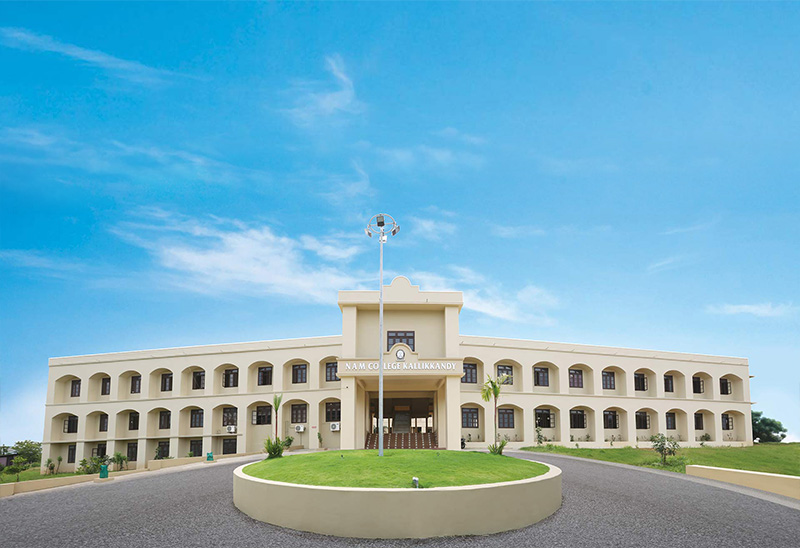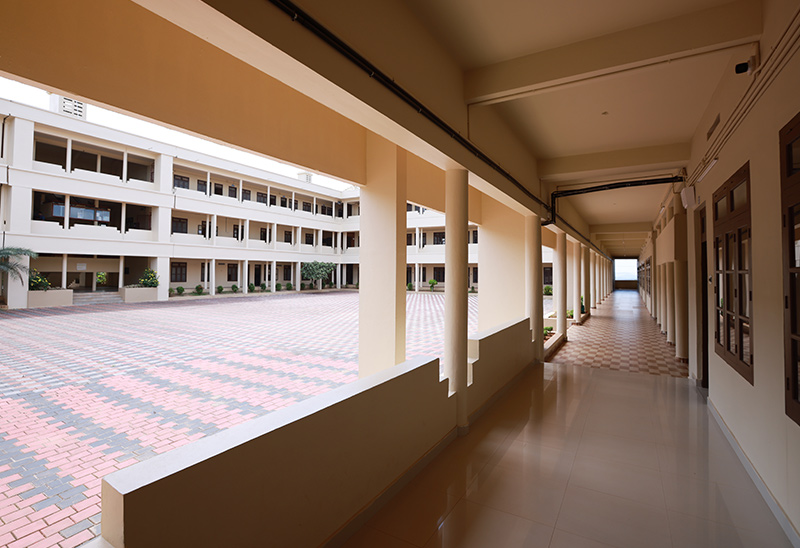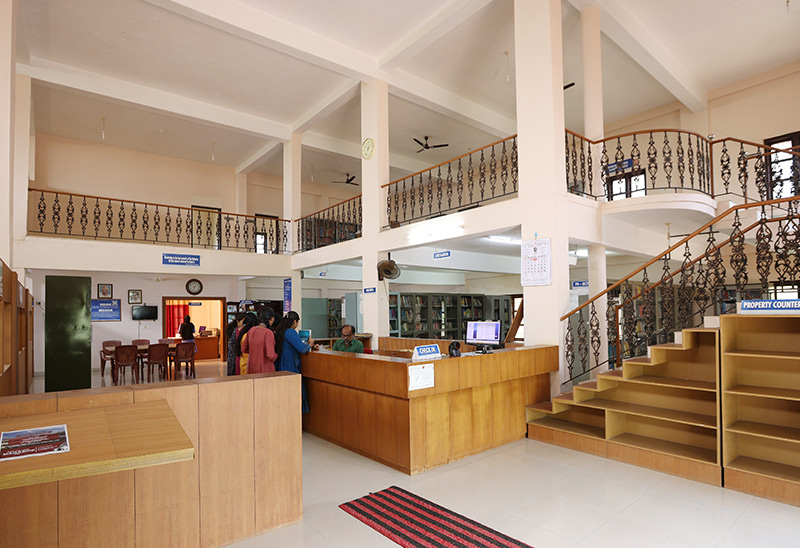‘In the Lunatic Asylum’: Activities of Ramakrishna Mission in Kerala
Author: Dr. Joy Varkey
VOLUME-1 ISSUE- 1
Published Date:01-03-2021
Abstract:
In a meeting of the disciples of Bhagvan Shri Ramakrishna in 1898, Brahmachari
Shuddhananda asked Swami Vivekananda: What would be the Ramakrishana Mission?s role
in the regeneration of India? Swami replied: “From this mutt (monastery) hundreds of men of
character will go out, who will deluge the country with spirituality. This will be followed by
social, political and other revitalizations. Consequently, there will come about a great
transformation in Indian society”.i
Thus spiritual awakening and consequent secular
regeneration, according to Vivekananda, constitute the foremost objective of Ramakrishna
Mission throughout the country.
Click here to read continue
Classical Ethnography: Reflections from the Ethnographic Narratives on Princely Cochin
Author: Rinu K. Louis
VOLUME-1 ISSUE- 1
Published Date:01-03-2021
Abstract:
The long sway of the British in Princely Cochin witnessed many socio-political as
well as cultural and economic changes in the latter. Perumpadappu Swaroopam or Princely
Cochin as it was known then received the blooms and thorns of the British rule like any other
contemporary state under the latter?s subjugation. The British policy of cooperation later
shifted to a policy of subordination. The British also used this period to frame out their
perceptions on the indigenous population. The policy of superiority of the European race was
highlighted in most of their writings. The existing social groups of Cochin were ascribed new
identities which suited the British interests. Though Cochin was under the indirect rule of the
British, what was introduced in British provinces was introduced within a decade in Cochin,
Travancore,Baroda and Mysore. Cochin was also a melting pot of heterogonous population.
Click here to read continue
Native Ruler and the Colonial Power: Judiciary of Cochin in the Age of Sakthan Thampuran
Author: Jose Kuriakose
VOLUME-1 ISSUE- 1
Published Date:01-03-2021
Abstract:
The legal history of the Cochin state can be classified under three heads. Pre-British
era, era of coexistence between the British and Indian laws and colonial era. It may be
difficult to trace back the Pre-British era, but it can be understood that the legal system was
revolved around caste and customs. Morality, born out of casteism, formed the base of the
justice system and those who violated such customs were given punishments accordingly.
Therefore, social sanctions and punishments created a social order based on fear.
Click here to read continue
THE DISCOURSES ON HISTORY IN MALAYALAM WRITINGS; MOULDING KERALA AS AN INDEPENDENT ENTITY IN EARLY 2
Author: Ansu Mathew
VOLUME-1 ISSUE- 1
Published Date:01-03-2021
Abstract:
Colonial India developed a new historical tradition from the inspiration of colonial
historiography and practiced to write its histories in a positivist methodology.i During the end
of the nineteenth century and the early twentieth century, a discursive space was formed in
the Malayalam magazines, regarding the historical consciousness and the crafting of history
of Kerala. Malayalam literary scholars were the main participants of these discussions. They
wrote articles about how to craft history and how to collect source materials for it. Thereby,
Linguists had an agenda to establish a particular political unit called Kerala for the validation
of the Malayalam language. This study uses a random selection of a few Malayalam essays
describing how to write history or Kerala history in the first half of the twentieth century.
Click here to read continue
TRADITIONAL MEDICINAL PRACTICES IN MALABAR
Author: Abdul Basith V. P.
VOLUME-1 ISSUE- 1
Published Date:01-03-2021
Abstract:
Traditional medicine (also known as indigenous healing practices or medicine)
includes medical aspects that developed over generations within various societies before the
advent of modern medicine. The World health organization estimate that eighty percent of the
populations in developing countries rely on traditional medicine, mostly plant drugs for their
primary health care needs. When adopted outside its traditional culture, traditional medicine
is often considered a form of alternative medicine. Practices known as traditional medicines
include traditional European medicine, traditional Chinese medicine, traditional Korean
medicine, traditional African medicine, Ayurveda, Siddha medicine, Unani, ancient Iranian
Medicine, Iranian (Persian), Islamic medicine and etc.
Click here to read continue
Disparate Sufism: The Making of Distinct Mystic Spaces in Coastal South India
Author: AboobakkarSiddiq T.S.
VOLUME-1 ISSUE- 1
Published Date:01-03-2021
Abstract:
This paper tries to locate the nature of Sufi hospices in the context
ofKayalpattanam, a pre-modern coastal town of South India. Unlike in the North and Deccan
regions of India, the coastal Muslim town of Kayalpattnam housed Sufis and their
institutionsunder the political patronage of native rulers with regional sway.Inscriptions
identified from Kayalpattnam region and spatial analysis of monuments like Jami, Palli,
Dargahand Thaykaform the basis of this paper. Sufi settlements in the North and Deccan
regions of India took form through the establishment of hospices (Khanqah, Jama’tKhana,
Ribat and Zawiya) by a Sufi or a group of Sufis who travelled from the Persianatei
regions
from the beginning of the twelfth century AD. By the fourteenth century this Persianate
territory extended to southern parts of India through the expansion of the Sultanates of Delhi
and this political movement paved the way for the formation of Sufi spaces in the Deccan
region. From the period of Tughlaqs, Sufi migration into Deccan intensified and new Sufi
landscapes emerged under the Mughals which continued during the period of independent
Sultanates of Deccan. However, on the Coromandel Coast the pattern of Sufi settlement is
distinctive as compared to those in the Persianate territories even while some likeness can be
ascribed.
Click here to read continue
Legal Dimensions of Prisoner’s Right In The Light of Article 21 of The Constitution of India
Author: Mohd Aqib Aslam
VOLUME-1 ISSUE- 1
Published Date:01-03-2021
Abstract:
In India, a person being a prisoner, cannot be seized of all his rights by the authority,
even though he is convicted as he is having fundamental rights guaranteed by the Article 21
of the Constitution and protected by the Supreme Court and High Courts. In this background,
the rights of the prisoners gained importance and have become the study of this research
work. This paper explains about existing Constitutional and Legal framework in India to
safeguard the prisoner’s rights and also elucidates the various executive and judicial
guidelines issued from time to time concerning the needs and care of prisoners. This paper
examines the role of the apex court for the protection of prisoner’s rights and their basic
fundamental rights remain enforceable. This paper examines available instruments and
compares them with the laws prevailing in India for providing protections to maintain their
human rights and legal rights.
Click here to read continue
Mapping, Surveying and Categorization: Locating Colonial Landscapes in Malabar
Author: Lijin M.
VOLUME-1 ISSUE- 1
Published Date:01-03-2021
Abstract:
This paper is an attempt to unravel the process of British engagements with nature
through the methods of surveying and mapping, and how the colonial administration reshaped
the landscapes of Malabar. Moreover, this study also explores the British administration’s
constant efforts to reconstruct the Malabar region into a governable space. Surveying and
mapping were the central tools of this endeavour. These methods also helped the colonial
power to weave the new regions into the British administration.The broader aim of this study
is to trace out the British administration's efforts to transform the Malabar region into a
governable landscape and locating the colonial landscapes in Malabar.
Click here to read continue
Tarkamrta of Jagadisatarkalamkara
Author: Anju P. P.
VOLUME-1 ISSUE- 1
Published Date:01-03-2021
Abstract:
The word darsana is derived form the root ‘drs’ (to see) applying the suffix lyut. Literally the term darsana denotes seeing. Generally darsana is divided into two nastikadarsana and astikadarsana. Nastikadarsana did not accept the authority of Vedas. They are Carvakadarsana of Carvaka, Jainadarsana of Vardhamana Mahaveera, Bauddhadarsana of Sreebuddha. Astikadarsana accept the authority of Vedas. They are six types, Samkhyadarsana of Kapila, Yogadarsana of Patanjali, Purvamimamsa of Jaimini, Uttaramimamsa of Badarayana. Vaisesika darsana of Kanada and Nyayadarsana of Gautamamuni.
Click here to read continue
The Educational views of Sir Sayed Ahmed Khan
Author: Raghishma P. M
VOLUME-1 ISSUE- 1
Published Date:01-03-2021
Abstract:
Indian Muslim pragmatist, Islamic reformist, and philosopher of the
nineteenth century, Sir Syed Ahmad Khan was born on October 17, 1817, in
Delhi.He came from a family of nobles of the Mughal court.After the death of
his fatherhe joined the services of the East India Company in 1838, as a judicial
officer.And remained loyal to them during the revolt of 1857, whereas the
British rulers regarded the Muslims as their ‘real enemies and most dangerous
rivals’ and followed a policy of discrimination against them.He believed that the
future of Muslims was doomed by the rigidity of their orthodox outlook, and
began to promote Western-style scientific education by founding modern
schools and journals and organising Muslim entrepreneurs.
Click here to read continue





 About Us
About Us Academics
Academics Admission
Admission Facilities
Facilities Student Zone
Student Zone IQAC
IQAC Profile
Profile Faculty
Faculty Courses
Courses Activities
Activities Achievements
Achievements Facilities
Facilities Learning Resources
Learning Resources Gallery
Gallery Examination Result
Examination Result Mentoring
Mentoring